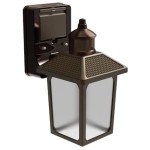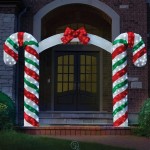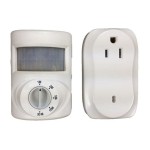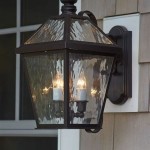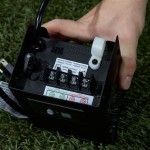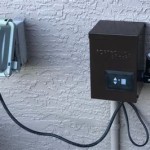Outdoor Stage Lighting: Illuminating Performances Under the Stars
Outdoor stage lighting is a crucial element in creating a captivating and memorable experience for audiences attending live performances under the open sky. From concert venues to theatrical productions and festivals, proper lighting design plays a vital role in enhancing the visual impact of the event, establishing the mood, and highlighting the performers. While there are similarities to indoor stage lighting, the unique challenges presented by outdoor spaces call for specialized techniques and equipment. This article will delve into the key aspects of outdoor stage lighting, exploring the factors to consider, available equipment, and essential techniques for achieving optimal results.
Understanding the Challenges of Outdoor Lighting
The unpredictable nature of outdoor environments presents unique challenges for lighting designers. Unlike indoor spaces, where controlled lighting conditions can be maintained, outdoor venues are subject to natural light fluctuations, varying weather conditions, and potential obstacles. Key considerations include:
- Sunlight: Daylight can significantly affect the visibility of stage lighting, requiring powerful fixtures to overcome the ambient brightness.
- Weather Conditions: Rain, wind, and humidity can damage equipment and impact the performance of lighting fixtures.
- Ambient Light: Streetlights, nearby buildings, and other light sources can create unwanted glare and interfere with the overall lighting design.
- Obstructions: Trees, buildings, and other physical barriers can obstruct the light beams and limit the lighting possibilities.
To address these challenges, outdoor stage lighting designs must be carefully planned and executed. Lighting designers need to select equipment capable of withstanding the elements, consider the impact of natural light and ambient sources, and implement strategies to overcome potential obstacles.
Essential Equipment for Outdoor Stage Lighting
Outdoor stage lighting utilizes a wide array of equipment tailored to meet the specific demands of the venue and performance. Some key categories include:
1. Lighting Fixtures:
Outdoor lighting fixtures are designed to withstand the elements and provide powerful illumination. Common types include:
- LED Wash Lights: These versatile fixtures produce wide beams of color and can be used for general stage illumination, backlighting, and special effects.
- Profile Spotlights: These fixtures produce a narrow beam of light that can be focused on specific areas of the stage, highlighting performers, scenery, or props.
- Par Cans: Parabolic reflector lamps, typically used for general stage illumination, provide a broad beam of light, often used for color washes.
- Moving Head Lights: These powerful fixtures offer various effects and can be controlled remotely to create dynamic lighting patterns.
2. Power and Distribution:
Outdoor lighting systems require a reliable power source and efficient distribution network. Typical components include:
- Generators: Provide backup or primary power for the lighting system, ensuring uninterrupted operation.
- Distribution Boxes: Distribute power safely and efficiently to the various lighting fixtures.
- Cables: Connect the power source, distribution boxes, and lighting fixtures.
- Surge Protectors: Protect the lighting system from power surges and fluctuations.
3. Control Systems:
Lighting control systems allow for precise programming and manipulation of the lighting effects. Common options include:
- Lighting Consoles: Provide a user interface for programming, controlling, and adjusting the lighting system.
- DMX Control: A digital communication protocol that allows for the control of multiple lighting fixtures from a single console.
- Wireless Control: Enables remote control of the lighting system via wireless signals.
Lighting Techniques for Outdoor Stages
Outdoor stage lighting techniques are designed to overcome the challenges of the environment and create a visually captivating performance. Key considerations include:
1. Overcoming Ambient Light:
Lighting designers must consider the impact of ambient light and develop strategies to minimize its interference. This may involve using powerful fixtures with narrow beams to focus the light on the stage and reducing the spill to surrounding areas.
2. Creating Depth and Dimension:
Using a combination of lighting techniques, such as front lighting, backlighting, and side lighting, can create depth and dimension on the stage, enhancing the visual appeal of the performance.
3. Establishing Mood and Atmosphere:
Lighting plays a pivotal role in establishing the mood and atmosphere of a performance. Warm, soft lighting can create a romantic ambiance, while cool, bright lighting can convey excitement or energy.
4. Highlighting Performers and Scenery:
Proper lighting techniques can highlight key elements of the stage, such as performers, scenery, and props, drawing attention to the focal points of the performance.
Outdoor stage lighting demands a combination of understanding the unique challenges of the environment, selecting the appropriate equipment, and employing effective lighting techniques. By carefully planning and executing the lighting design, event organizers can illuminate performances under the stars and create an unforgettable experience for audiences.

Outdoor Concert Lighting And Staging Eventos Montajes

The Only Led Moving Wash You Need For Outdoor Stage Lighting Light Sky

Outdoor Concert Exhibition China Beautiful Stage Lighting Truss Bolt And Audio Made In Com

Stage Lighting Equipment Spotlights On Outdoor Concert With Light Beams Stock Photo Adobe

Aluminium Alloy Event Concert Stage Lighting Spigot Truss For Outdoor Activity Ferult Tent

Stage Lighting Als

Outdoor Concert Exhibition Stage Lighting Roof Trade Show Spigot Truss China Line Array And Audio Made In Com

Full Stage Lighting And Sound For A Joy Filled Festival Slx

Small Stage Lighting Setup The Westin Kierland Marshall S Pavillion Karma Event

Stage Lighting Outdoor Light Architecture
Related Posts
